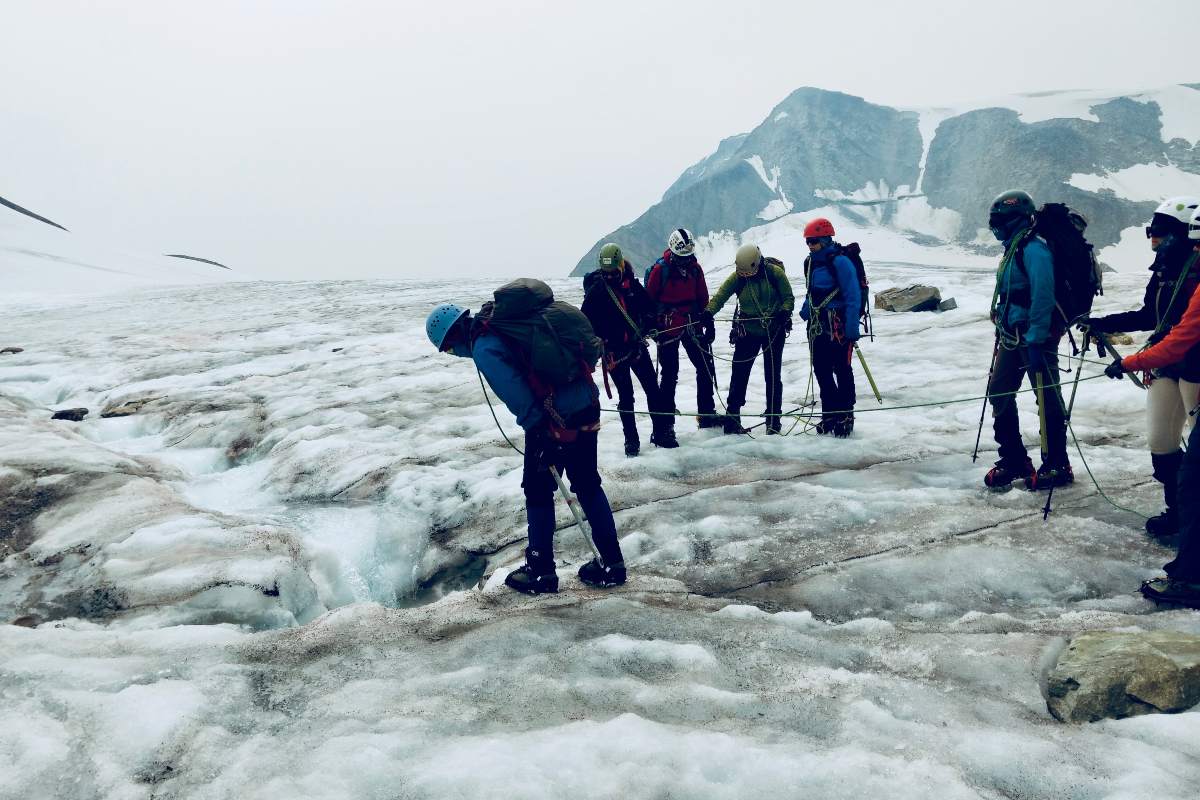
A past expedition of Girls on Ice Canada. For the past two years, the program has brought 10 women—aged 16 to 17—to the Illecillewaet and Asulkan glaciers in Glacier National Park of Canada in British Columbia alongside experts including guides, scientists, and artists. Photo credit: Alison Criscitiello
Girls on Ice Canada is back in 2020, offering virtual programming during the COVID-19 pandemic together with Inspiring Girls Expeditions.
For the past two years, Girls on Ice Canada (GOIC) has brought 10 women—aged 16 to 17—to the Illecillewaet and Asulkan glaciers in Glacier National Park of Canada in British Columbia alongside experts including guides, scientists, and artists. The goal? To foster the self-confidence in young Canadian women to create lifelong advocates for Earth science and wilderness stewardship.
While this expedition won’t be possible in 2020 due to the spread of COVID-19, Alison Criscitiello knows that GOIC’s mission can still be enacted in the digital sphere in 2020.
“Though there will certainly be some challenges with delivering a remote program like this, we collectively decided we'd like to offer a virtual program instead of simply cancelling and offering nothing for 2020,” said Criscitiello, ice core scientist and Director of the Canadian Ice Core Lab housed in the University of Alberta's Faculty of Science.
Offered free of charge, GOIC is now in its third year. The program is patterned after the American model of Girls on Ice, which has been running for the past two decades, part of the largerInspiring Girls Expeditions.
“It is our hope that in 2021, we will be able to accommodate expeditions for the accepted 2020 applicants in addition to a new cohort that will apply during the next application round,” said Criscitiello. “We are also spending this time, with in-person expeditions cancelled, working on other larger organization projects such as getting a Girls on Ice Yukon program off the ground.”
Powerful leadership
Criscitiello is an accomplished glaciologist whose work regularly takes her on expeditions to drill ice cores in the Canadian Arctic and Antarctica. And in the lab, Criscitiello collaborates on international research projects that examine the clues about our changing climate that are locked within the ice. She is also the co-founder and expedition leader for GOIC.
When reflecting back on her journey, Criscitiello considers her motivations for creating the GOIC program in the first place.
“I grew up in liberal New England, in an upper-middle class suburb of Boston, and I'm white,” she said. “I am where I am today for so many reasons, but one of them is privilege. One of the reasons that I’ve wanted to make this program a reality was the strong drive to create something in Canada—however small—that helps to redistribute privilege and open up new opportunities by removing as many barriers as possible.” GOIC aims to increasingly reach Indigenous and minority populations across all provinces and territories, particularly in the North—helping serve young women from the most remote parts of Canada who have limited access to opportunities like this one.
This summer, Girls on Ice Canada (GOIC) received funding from theNatural Resource and Engineering Research Council of Canada (NSERC) PromoScience Program to continue their valuable work in 2020 and 2021.
“The NSERC PromoScience funding is absolutely crucial to this critical program, and it means more than we can express to have federal support,” she said. “The PromoScience competition is rigorous, and we're proud to be among the recipients of such a prestigious award.”
Learn more about Girls on Ice Canada’s digital offerings in 2020.
Interested in learning more?
Learn more about how the University of Alberta is preparing to engage students for September and beyond on our Fall 2020 hub.
Students, faculty, and staff can stay up-to-date with the latest information on COVID-19 for the campus community online.